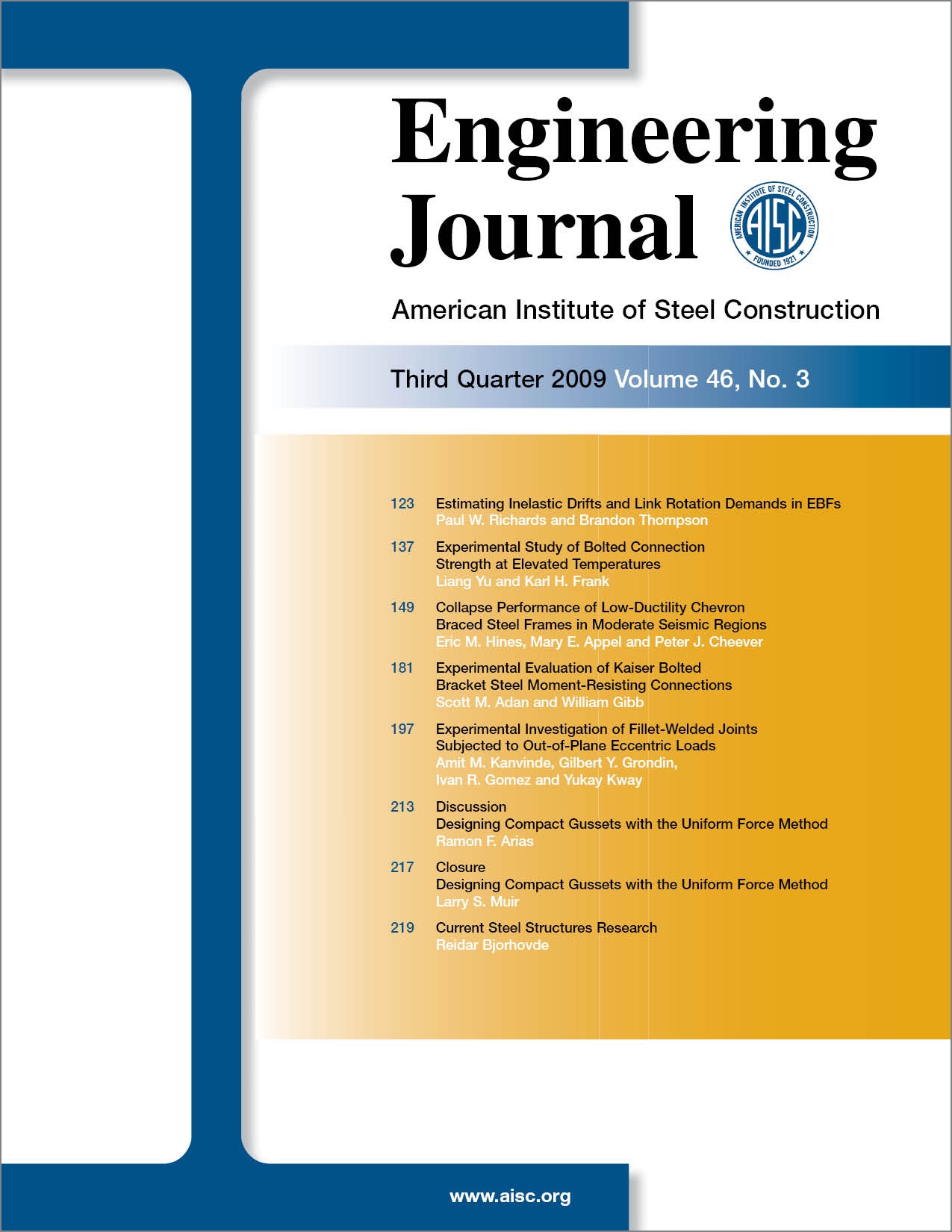Estimating Inelastic Drifts and Link Rotation Demands in EBFs
DOI:
https://doi.org/10.62913/engj.v46i3.959Keywords:
analysis, lateral systems, seismic designAbstract
When designing eccentrically brace frames (EBFs), the inelastic rotation of the links is estimated to ensure that links will not experience excessive rotations. Typically, design engineers amplify elastic analysis results to estimate EBF link inelastic rotations. Twelve EBF frames of different height (3-, 9-, and 18- story) and strength were designed and two types of analyses performed: static elastic analysis under the design base shear; and non-linear dynamic analysis under ten design-level earthquakes. Roof drifts, story drifts, and link rotations were estimated by amplifying values from the static elastic analyses, and then compared with average values from the dynamic analyses. Poor correlation was observed. For the 3-story frames, estimated link rotations were as much as 63% lower than the rotations observed in the dynamic analyses. For the 9- and 18-story frames, estimated link rotations were as much as two times greater than those observed in the dynamic analyses. Calibrated amplification factors were developed for better estimation of link inelastic rotation. It is demonstrated that amplifying only the shear component of the elastic story deformations will lead to more reasonable estimates.

